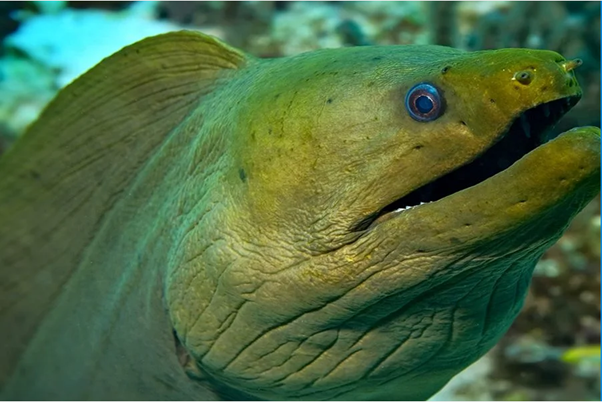
Here are nine fascinating facts about Green Moray Eels (Gymnothorax funebris) – the first is that they’re not actually green! Instead, their skin is usually brown or grey with a yellow tint. The greenish hue comes from a yellowish mucus that covers their bodies, (eww!!) giving them a distinct appearance.
The Eels Length and Size
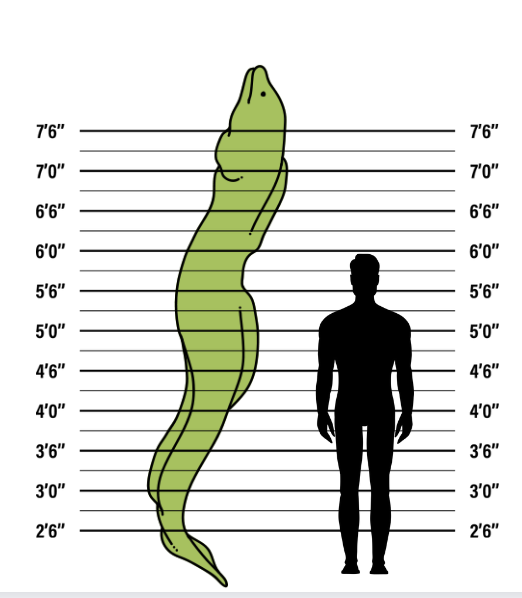
These eels can grow to impressive lengths, reaching up to 8 feet (2.4 meters) or more. Despite their length, they have relatively small eyes.
The Eels As Nocturnal Predators
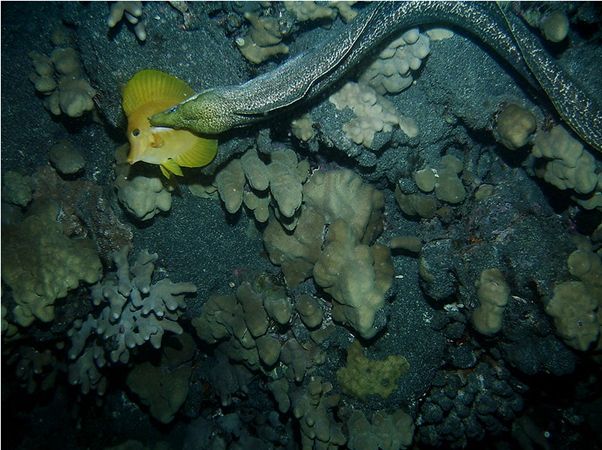
Green Moray Eels are nocturnal hunters, preferring to venture out of their hiding spots at night to actively search for prey. Their keen sense of smell helps them locate food in the dark. Fishes beware!
The Eels’ Super Sharp Teeth
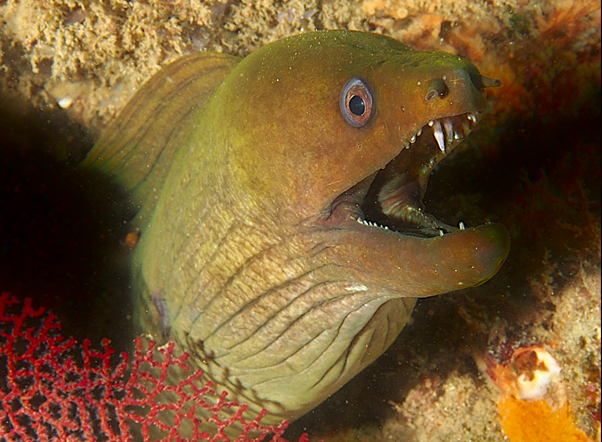
Possessing a set of sharp teeth, Green Moray Eels are formidable predators. They use their teeth to grasp and restrain prey, which typically includes fish, crustaceans, and cephalopods.
The Eels Grotesque & Unique Hunting Strategy
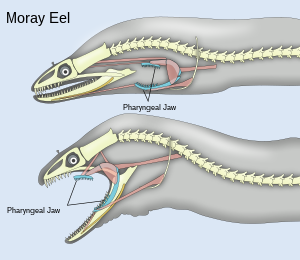
These eels employ a unique hunting strategy known as “pharyngeal jaw protrusion.” They can extend their jaw forward and grab prey without having to leave their hiding places in coral reefs or rocky crevices.
The Eels Habitat of Choice
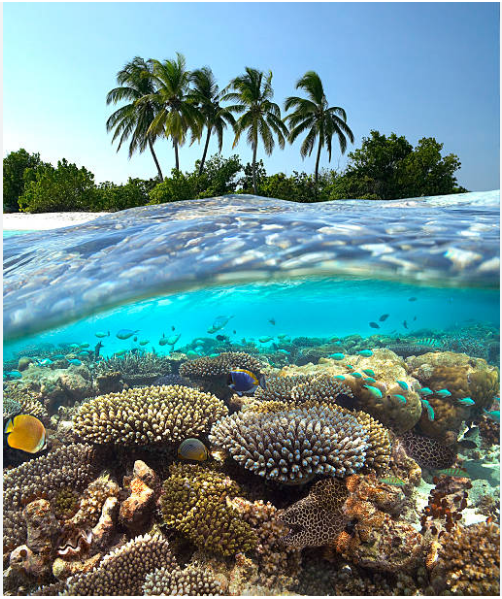
Green Moray Eels are commonly found in tropical and subtropical waters of the Atlantic Ocean, including the Caribbean Sea and the Gulf of Mexico. They prefer living in coral reefs, rocky areas, and coastal waters.
The Mating Rituals of Green Moray Eels
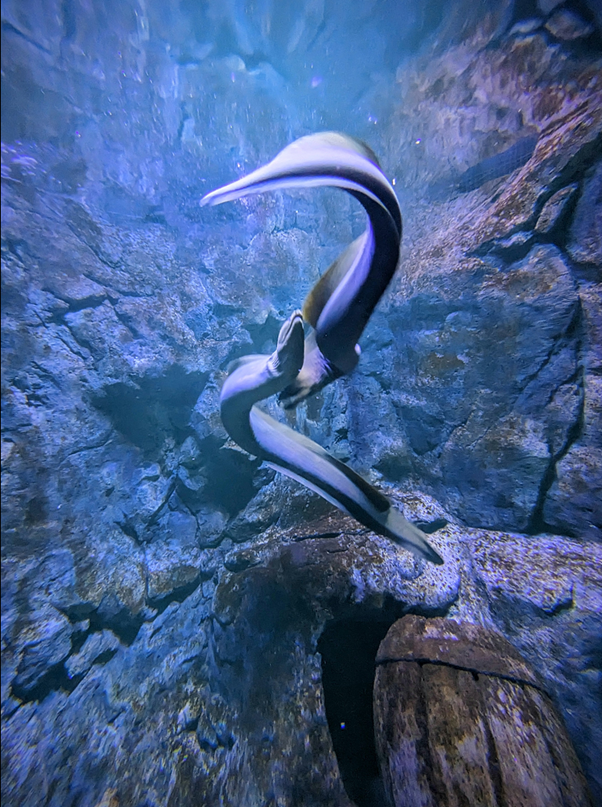
During the mating season, which typically occurs in the warmer months, green moray eels engage in intricate courtship rituals. The males initiate the courtship process, and once a pair is formed, they engage in synchronized swimming.
The Lifespan of Eels

Green Moray Eels have a relatively long lifespan for marine creatures, living up to 20 years in the wild. Their longevity allows them to become an integral part of their coral reef ecosystems.
The Eels Conservation Status

While they are not currently classified as endangered, green moray eels face threats such as habitat degradation, overfishing, and the destruction of coral reefs. Conservation efforts are crucial to maintaining healthy populations of these intriguing, surprisingly beautiful, marine species.
These fascinating facts highlight the unique features and behaviours of green moray eels, showcasing their importance in marine ecosystems and the need for conservation efforts to protect their habitats. To find out more click here, but even better, visit Hastings Aquarium to see these extraordinary creatures for yourself!
